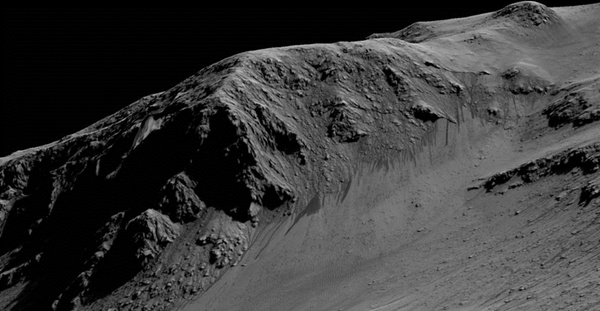NASA finds 'strong' evidence for liquid water on Mars
 0 Comment(s)
0 Comment(s) Print
Print E-mail Xinhua, September 29, 2015
E-mail Xinhua, September 29, 2015
 |
|
The dark, narrow streaks flowing downhill on Mars at sites such as this portion of Horowitz Crater are inferred to be formed by seasonal flow of water on modern-day Mars. [Photo/NASA] |
Some perchlorates have been shown to keep liquids from freezing even when conditions are as cold as minus 94 degrees Fahrenheit (minus 70 Celsius), NASA said. On Earth, naturally produced perchlorates are concentrated in deserts, and some types of perchlorates can be used as rocket propellant.
Perchlorates have previously been seen on Mars. For example, NASA's Phoenix lander and Curiosity rover both found them in the planet's soil, and some scientists believed that the Viking missions in the 1970s measured signatures of these salts.
"However, this study of RSL detected perchlorates, now in hydrated form, in different areas than those explored by the landers," NASA said. "This also is the first time perchlorates have been identified from orbit."
For Ojha, the new findings are more proof that the mysterious lines he first saw darkening Martian slopes five years ago are, indeed, present-day water.
"When most people talk about water on Mars, they're usually talking about ancient water or frozen water," he said.
"Now we know there's more to the story. This is the first spectral detection that unambiguously supports our liquid water-formation hypotheses for RSL."






Go to Forum >>0 Comment(s)